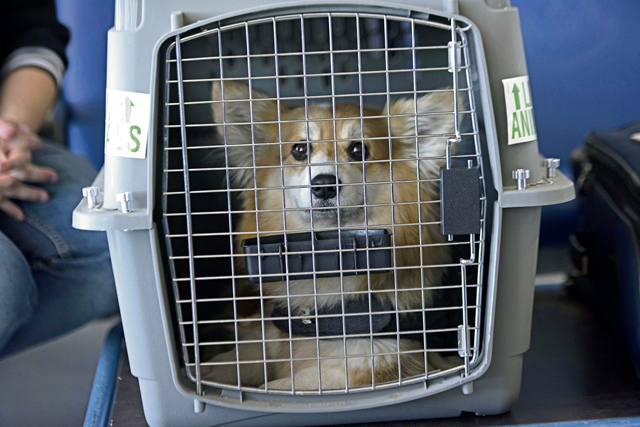
Starting August 1, at 12:01 a.m. Eastern Time, the Centers for Disease Control and Prevention set new import requirements for dogs entering the United States.
With the recent changes from the CDC, Public Health Command Europe veterinarians strongly encourage service members and civilians, who are moving back to the U.S. with their dog after Aug. 1, to plan accordingly and get familiar with the new entry requirements.
The CDC issues regulations to control the entry of dogs into the United States from other countries. These rules apply to all dogs, including puppies, service animals, and dogs that left the United States and are returning. They also apply whether you are a U.S. citizen, legal U.S. resident, or foreign national.
“The CDC has noted an increase in canine rabies in the United States in the recent year, whereas previously it had been eliminated. Other wildlife strains of rabies have existed in the U.S. and all strains can pose a risk to humans and their pets,” said Lt. Col. Diane Collette, Regional Veterinary Clinical Consultant at PHCE. “CDC, USDA and import officials at borders have also recognized concerns with the validity of forms of pets entering the U.S.”
Dog rabies was eliminated in the United States in 2007 but unvaccinated canines can still contract the disease from rabid wildlife such as raccoons, skunks or bats.
According to the new regulations, the dog must be healthy upon arrival, at least 6 months of age and microchipped. They must be vaccinated and have the necessary veterinary documents, along with a CDC Dog Import Form receipt, according to the CDC’s website.
These rules apply to dogs that left the U.S. and are returning regardless of the country they are coming from.
“If you don’t follow CDC’s rules, your dog won’t be allowed to enter the United States,” the CDC states on its website. “If denied entry, your dog will be sent back to the last country of departure at your expense. Country of departure is where the last trip originated — not where the dog was born or where it lives.”
“All personnel stationed overseas and scheduled to PCS back to the United States after August 1 should review the CDC requirements,” said Collette. “Please reach out to your Veterinary treatment Facility if you have any other questions or concerns, it’s crucial to plan accordingly to prepare for a smooth PCS.”
Use the DogBot below to determine what rules apply to your dog based on the dates of travel and where your dog is traveling from. Here’s the link https://www.cdc.gov/importation/bringing-an-animal-into-the-united-states/dogs.html


